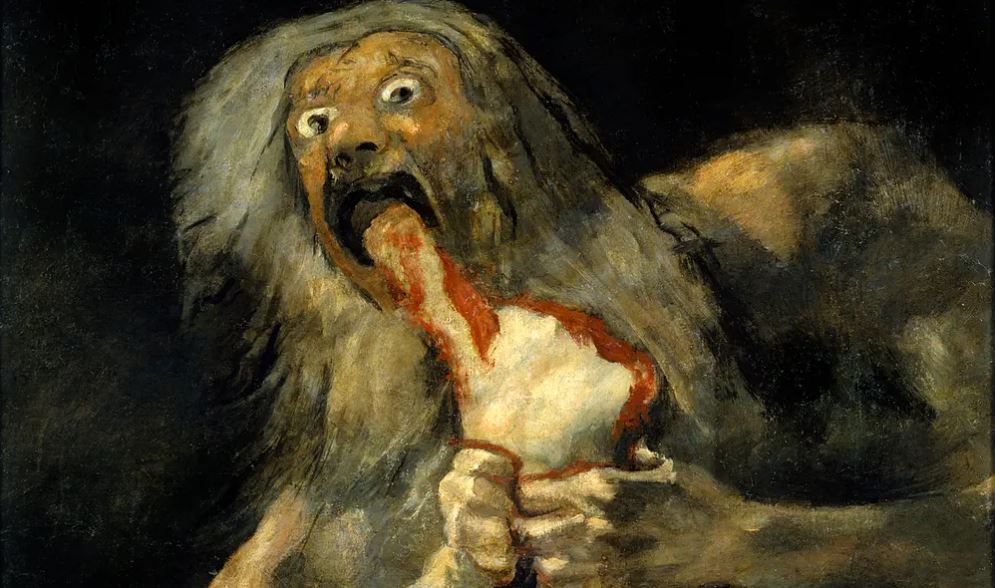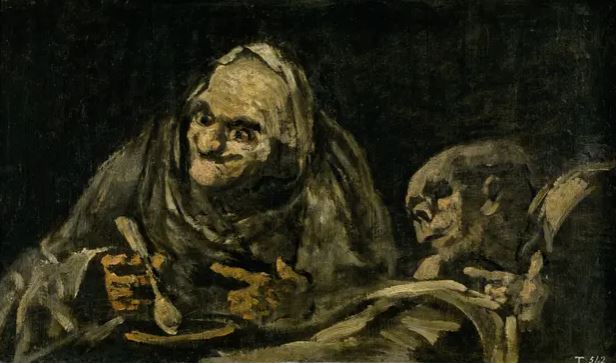Introduction
In 1235, the Vatican issues an order authorizing the start of an Inquisition aimed at re-establishing the orthodoxy of the Christian faith. Heresy was charged with, or as witchcraft, because any sort of magic necessitated an association with the devil. This form of judgment went on and only partially died away in the seventeenth century (Carroll and Ward 2). This window allowed for artists such as poets, painters, writers to utilize their creativity to artistically depict the horrors that were prevalent at the time. Visual art inspired playwrights and later film directors into bringing paintings to life. For instance, Hieronymous Bosch, a Dutch artist produced paintings with religious themes and disturbing impact between 1470 and 1516. In 1781, Henry Fuseli, a professor of painting at the British Royal Academy made the grisly painting, The Nightmare, that portrayed a woman deep in sleep with her arms thrown below her and demonic incubus crouching on her chest (Horror Palace). Consequently, he was considered quite insane by most of his peers as a result of his more macabre tastes.
Main body
In 1819, a court painter from Spain, Francisco Goya produced a series of eighteen frescos commonly referred to as the Black Paintings, as a response to the French invasion. He had a knack for the dark themes and subjects as shown in his earlier works that were a satire to witchcraft beliefs, war, depression, loneliness, and anxiety (Pomona College 3; Carroll and Ward 2). Some modern horror films and franchises have drawn inspiration from the imagery and terminology used in some of Goya’s Black Paintings. A contemporary example is the depiction of the devil as a goat in the film series, The Chilling Adventures of Sabrina and the 2015 film The Witch, which bear close semblance to the same entity’s depiction in Goya’s The Witches Sabbath painting. Other examples may include demon-like antagonists, such as in The Conjuring and The Exorcist film franchises, with a similar case depicted in Goya’s Two Old Men painting. Additionally, the mythology of pagan deities used in Goya’s Saturn Devouring his Son is popular in modern films such as The Pale Man and the Supernatural series
Saturn Devouring his Son

Saturn Devouring his Son is the name that was given to a painting developed by the Spanish artist Francisco Goya. The traditional interpretation of the painting was based on the Greek mythology of the Titan Cronus, who ate his children upon their birth fearing that they would grow up to overthrow him. Goya painted the background black while the limbs and the head of Saturn seemed to pop out of the shadows, his eyes huge and bulging like he was mad, his fingers digging into the back of the child has already devoured his head and right arm (Horror Palace). The entire image is dark and eerie, and regardless of the meaning behind it, leaves a haunting impression.
The movie, Pan’s Labyrinth by Guillermo del Toro, depicts a monster character, the Pale Man who consumes his children just like Saturn. The Pale Man, just as his name suggests, is pale as he drinks the blood of the innocent. The Pale Man who in reality is Captain Vidal in the movie has murals on his walls and ceiling (in his subterranean liar) portraying him in the act of killing innocent children by either devouring them or stabbing them. There is a pile of children’s shoes next to one pillar in the room suggesting that they belonged to the children he had killed. The Pale Man also rips off the heads of fairies in front of the main protagonist, Ofelia. This killing of children and killing of fairies by way of ripping off their heads is similar to Goya’s painting of Saturn killing his son by ripping his head off. The use of Greek mythology is common in both the movie and in Goya’s Saturn Devouring his Son painting.
Two Old Men Eating Soup by Francisco Goya
This painting shows two old men at a table, though only one old man seems to be alive. The old man who is alive holds a spoon over a bowl that presumably has soup while the other who looks more like a skeleton seats beside him (Horror Palace). The old man who is alive looks sad, lonely, and beaten down by life and it seems as though he can only seek the company of the dead

This painting can be used to set the tone of melancholy and loneliness for a horror film much like flicks such as The Others, Pet Sematary, and Life After Beth. An instance would be where a child loses his parents and an older brother in a grisly road accident that leaves him all alone at a young age. He is overwhelmed with grief and misplaced guilt. The boy is later taken in by foster parents who are neglectful, distant, and abusive. His foster father is a physically abusive alcoholic. The foster mother overworks him and denies him food occasionally. He is also bullied a lot in school for being an orphan. One day the boy gets beaten so badly by his foster father that he silently wishes his older brother was alive to defend him. He involuntarily summons his older dead brother every time after the incident whenever he is in pain and eventually his wish is granted.
The brother appears in form of a skeleton, punishing both his foster parents and anyone else who tries to bully the boy at home as well as at school. He hangs around in the shadows and only comes out when the boy is alone. This goes on for most of the boy’s life. The boy after growing into a man, then into an old man and tired of his older brother’s constant interruption of his life, tries killing him but only ends up being his brother’s prisoner who makes him drink people’s blood as soup until he dies of blood infection.
Conclusion
Painting is an art that mostly depicts the environment in which an artist lives. The environment could be social, cultural, political, and/or economic. These environments determine and inspire the creative process that goes into developing a painting. An artist’s personal life, as well as their mental and health state, could also be an inspiration for the making of art. Directors, playwrights, producers, and other individuals involved in film-making often use their platforms to bring paintings to life by sourcing visual and creative inspiration for their future films. They majorly reference famous artists from the past who were authentic and highly creative in their craft such as Francisco Goya.
Works Cited
Carroll, David, and Kyla Ward. “The Horror Timeline”, Tabula Rasa. Web.
Pomona College Museum of Art. “The Etchings of Francisco De Goya.” 2016. Web.
Horror Palace. “Francisco Goya: The Black Paintings (Pinturas Negras)” 2015. Web.